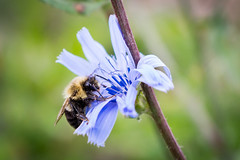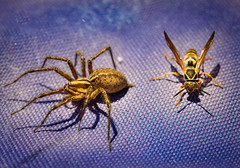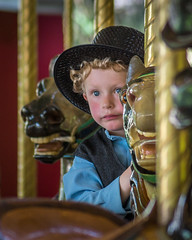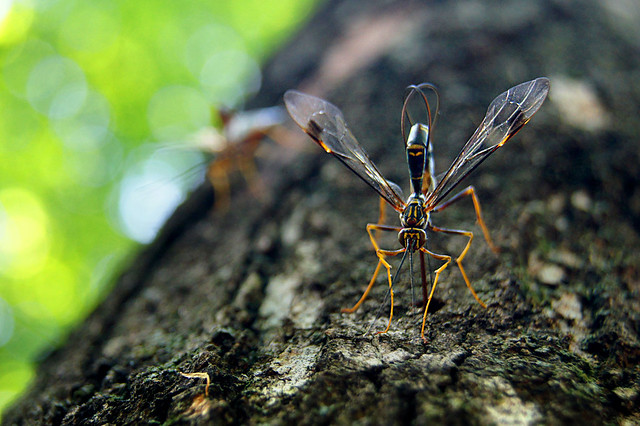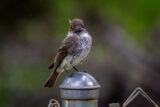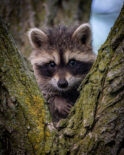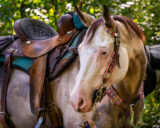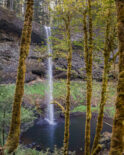Winged Wonder
 On a walk along the trails of Door County’s Potawatomi State Park (near Sturgeon Bay, Wisconsin) I encountered some of the strangest bugs I’ve ever seen. There were a number of these bugs on a tree. They were not easily spooked, so they were easy to photograph.
On a walk along the trails of Door County’s Potawatomi State Park (near Sturgeon Bay, Wisconsin) I encountered some of the strangest bugs I’ve ever seen. There were a number of these bugs on a tree. They were not easily spooked, so they were easy to photograph.
The large image is a shot looking up the tree – as the bug was facing down. It looks like a rather unique bug…but not so much different than a lot of flying bugs. The thing that makes this the strangest bug I’ve come across is how it lays it’s eggs.
The bug’s body was about 1 1/2 to 2 inches in length. Those strands that arch up over it’s abdomen (the back end), were inserted into the tree. (Better seen in the side view.) When I finally saw one move, it pulled those strands out and they were three to four times the over all length of the bug’s body. It was like watching some very small-scale version of an space alien movie monster.
It took quite a bit of Googling to figure out what this bug is. According to www.exploretheoutdoorsohio.com this is the giant ichneumon wasp (Megarhyssa macrurus). Those long things are called an ovipositor. It inserts them into the dead wood of a tree, in search of one thing: the larva of another wasp, the pigeon tremex horntail (Tremex columba). It can detect the wasp larva’s movements in the wood, locate it, and then lay an egg next to the larva. Once the ichneumon wasp has done this, it will then sting the horntail larva, paralyzing it. Later, the ichneumon wasp larva will hatch and devour the horntail wasp, and continue to grow to adulthood.
I didn’t realize this was a wasp. Lucky for me, it is harmless to humans! The article I read said, “If you’re walking in the woods and come upon some dead trees in a sunny area, search around a bit and you might be lucky enough to find one.”
You can view a larger version of either photo by clicking on them.






